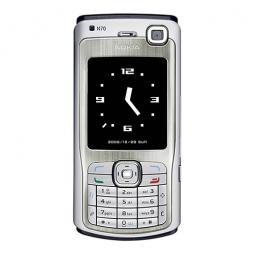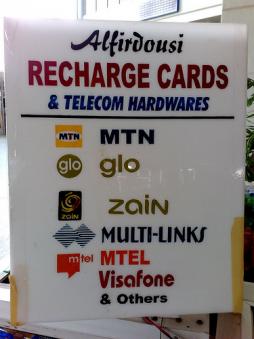mobile broadband
Posted by MarkWeingarten on Feb 21, 2011
Going Mobile: Technology and Policy Issues in the Mobile Internet data sheet 1466 Views
Abstract:
This report examines changes that must be made to the Internet and to the mobile network to make the Mobile Internet a pervasive and universal reality in the United States and the rest of the world. Some of these changes are purely technical, but their scope affects Internet engineering as well as mobile network, device, and application engineering. The rest of the changes will take place in the policy sphere, affecting notions of network neutrality and spectrum policy. The examination of technology is quite extensive, and is illustrated with specific examples of emerging devices and applications.
Posted by AnneryanHeatwole on Aug 13, 2010
Today's Mobile Minute features links on fundraising with QR codes, a survey report on how audiences get information, a breakdown of how journalism is changing due to mobile phones, the announcement of a clearer definition of mobile broadband, an open-source, solar-powered mobile network, and five cross-platform mobile development tools.
Posted by MohiniBhavsar on Aug 03, 2010
The Swedish International Development and Cooperation Agency (Sida) recently published a report, The Innovative Use of Mobile Applications in East Africa, that provides an overview of the current state of mobile phone applications for social and economic developments in East Africa. The report seeks to answer “what hinders the take-off of m-applications for development in East Africa" and asks what role donors should play.
While mobile phones are the main channel for information in East Africa, with mobile penetration covering over 40% of the population, sustainable, scalable mobile services for social and economic development are limited. The report is supported by secondary data, statistics, and field work carried out in Kenya, Rwanda and Tanzania, along with numerous interviews, meetings and discussions with key stakeholders in East Africa. Major trends in mobile usage, barriers for increased use of m-applications, as well as opportunities for scaling are discussed.
Barriers: High Cost of Ownership.
Posted by MohiniBhavsar on Jul 27, 2010
The Innovative Use of Mobile Applications in East Africa data sheet 3641 Views
Author:
Johan, Hellstrom; Swedish International Development Cooperation Agency
Abstract:
The Swedish International Development and Cooperation Agency (Sida) recently published a report that gives an overview of the current state of mobile phone applications for social and economic developments in East Africa. Drawing on successful adoption of mobile applications in the Philippines, this Sida report seeks to answer “what hinders the take off of m-applications for development in East Africa and what role donors play in the process.” While mobile phones is the one of the most widely accessible gateways for information in East Africa, with mobile penetration covering over 40% of the population, sustainable, scalable mobile services for social and economic development are limited. The report is supported by secondary data, statistics, and field work carried out in Kenya, Rwanda and Tanzania, along with numerous interviews, meetings and discussions with key stakeholders in East Africa. Major trends in mobile usage, barriers for increased use of m-applications, as well as opportunities for scaling are discussed.
Posted by ToniTwiss on Aug 30, 2009
Ubiquitous Information - Mobile Phones in the Classroom data sheet 3203 Views
Abstract:
A New Zealand Ministry of Education eFellowship report on the use of mobile phones in classrooms to foster information literacy skills.
The report considers the impact ‘anytime’ access to information via access to the mobile internet will have on teaching and learning in the future. It explores the potential applications for mobile phones in the classroom and the skills that students will need in order to cope with the mass of information on-demand that is available to them.
The research conducted for the purpose of this report involved a class set of 30 3G mobile phones being made available for a single unit of work by three different classes; a Year 12 Media Studies, Year 9 Social Studies and a general Year 8 class. Each unit of work ran for approximately 5-7 weeks. The teachers involved in the study were given support to learn how to use various functions of the mobile phones and to plan their unit of work.
The findings of this report indicate the following:
- Applications and tools available for use via a mobile phone, including access to the world wide web, have a great deal of potential for use in schools.
- Currently cost of data is the single biggest factor in limiting this use.
- While as teachers we are constantly being told our students are ‘digital natives’, many of our students are not as au fait with technology as teachers are led to believe. Students are being labelled the ‘net-gen’ and teachers who have been told that they are ‘digital immigrants’ often do not see that the skills they believe their students to have are not always present. While students may seem very ‘tech savvy’ they still need to be taught the skills to deal with the world that their use of technology gives them access to, namely the world wide web and information overload.
- Key factors identified by secondary school teachers as impacting their ability to teach information literacy included limited access to resources (particularly technologies for accessing the world wide web), access to professional development and the impact of timetabling leading to a highly segmented curriculum.


